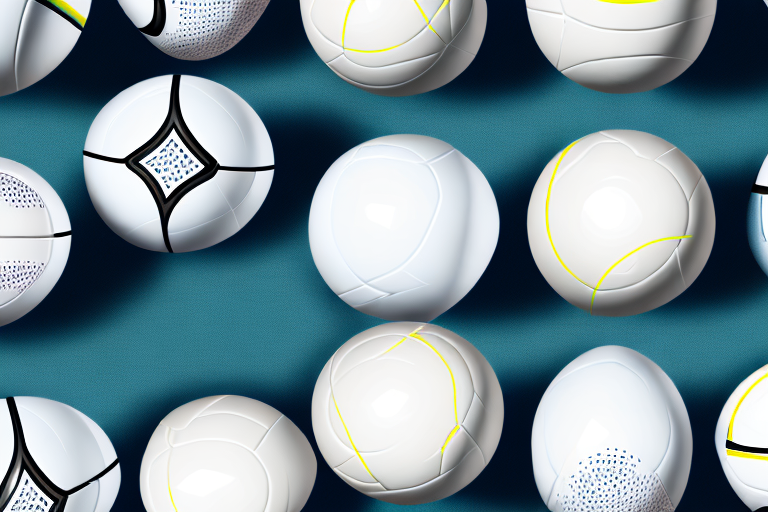As humans, it is common to experience muscle tension from time to time, especially after an intensive workout or prolonged periods of inactivity. Muscle tension can cause pain, stiffness, and reduced range of motion, making it difficult to perform daily activities with ease. One effective way to relieve muscle tension is through trigger point therapy, which involves applying pressure to specific points in the muscle to release tension. In this article, we will explore five lacrosse ball trigger point exercises that can help relieve muscle tension in different areas of your body.
How Trigger Point Therapy with Lacrosse Balls Works
Trigger point therapy is a massage technique that focuses on pressure points in the muscles. It targets areas in the muscles that are “knotted” by applying pressure to release tension. By pressing the trigger points, your body sends signals that help to flush out toxins from the muscle and increase blood flow, leading to improved muscle function and flexibility. Using a lacrosse ball for trigger point therapy has been found to be particularly effective in reaching deep muscles and relieving tension.
When using a lacrosse ball for trigger point therapy, it is important to start with a gentle pressure and gradually increase it as your muscles become more relaxed. You can use the ball to target specific areas of tension, such as the shoulders, back, or hips. It is also important to breathe deeply and relax your muscles as you apply pressure to the trigger points. With regular use, trigger point therapy with a lacrosse ball can help to improve your overall muscle health and reduce pain and stiffness.
Understanding Muscle Tension and Its Causes
Before we delve into the lacrosse ball trigger point exercises, it’s essential to understand what muscle tension is and how it can be caused. Muscle tension happens when the muscle fibers contract and stay that way, causing stiffness, soreness, and limited motion range. Muscle tension can be caused by poor posture, stress, dehydration, overuse of muscles, and injury.
Poor posture is one of the most common causes of muscle tension. When you sit or stand with your shoulders hunched forward and your head down, it puts a strain on your neck and back muscles, causing them to tense up. Stress is another significant contributor to muscle tension. When you’re stressed, your body releases hormones that cause your muscles to contract, leading to tension and discomfort. Dehydration can also cause muscle tension, as it can lead to a lack of electrolytes and minerals that are essential for muscle function. Overuse of muscles, such as repetitive motions or lifting heavy weights, can also cause muscle tension. Finally, injury, such as a sprain or strain, can cause muscle tension as your body tries to protect the injured area by tensing up the surrounding muscles.
Benefits of Trigger Point Therapy to Relieve Muscle Tension
Trigger point therapy using lacrosse balls has several benefits, including:
- Reduced muscle pain and tension.
- Improved muscle flexibility and range of motion.
- Promotion of blood flow to the muscles.
- Decreased stiffness in the muscles.
Choosing the Right Lacrosse Ball for Trigger Point Exercises
Not all lacrosse balls are created equal, and selecting the right one is crucial for effective trigger point therapy. Ideally, you should choose a ball that is firm, yet not too hard. A ball that is too hard can cause pain and discomfort, while a soft ball may not apply enough pressure to trigger points.
Preparing Your Body for Trigger Point Therapy
It’s important to prepare your body before starting trigger point therapy exercises. Begin by warming up the targeted muscle with light exercises, such as stretching or a short cardio workout. This helps to increase blood flow to the muscle, making it more receptive to trigger point therapy. You should also hydrate your body before starting the exercises to prevent muscle soreness and cramping.
Step-by-Step Guide to Performing 5 Lacrosse Ball Trigger Point Exercises
Here are five lacrosse ball trigger point exercises that you can use to relieve muscle tension.
1. Upper Back Release
To perform this exercise:
- Lie down on the floor with a lacrosse ball under your upper back.
- Slowly roll the ball around until you identify a tender spot.
- Apply pressure to that spot and hold for 30-40 seconds, then release.
- Repeat on each tender spot you identify.
2. Glute Release
To perform this exercise:
- Sit on the floor with your legs extended and a lacrosse ball under one buttock.
- Roll the ball around until you identify a tender spot.
- Apply pressure to the spot and hold for 30-40 seconds, then release.
- Repeat on each tender spot you identify.
3. Hamstring Release
To perform this exercise:
- Sit on the floor with one leg bent and one leg extended.
- Place a lacrosse ball under your hamstring and roll around on top of it until you identify a tender spot.
- Apply pressure to the spot and hold it for 30-40 seconds, then release.
- Repeat on each tender spot you identify.
4. Plantar Fascia Release
To perform this exercise:
- Sit on a chair with your foot resting on a lacrosse ball on the ground.
- Roll your foot around on the ball until you identify a tender spot.
- Apply pressure to the spot and hold it for 30-40 seconds, then release.
- Repeat on each tender spot you identify.
5. Shoulder Release
To perform this exercise:
- Stand facing a wall with a lacrosse ball between the wall and your shoulder blade.
- Lean against the wall, so the ball applies pressure to your shoulder blade.
- Roll around to find a tender spot, apply pressure and hold for 30-40 seconds, then release.
- Repeat on each tender spot you identify.
Specific Areas of the Body Targeted by Each Exercise
The five trigger point therapy exercises listed above target different areas of the body to relieve muscle tension. The upper back, glutes, hamstrings, plantar fascia, and shoulders are among the areas where most people experience tension and can be relieved by using these exercises.
Tips for Maximizing the Effectiveness of Trigger Point Therapy
Here are some tips to help you maximize the effectiveness of trigger point therapy:
- Drink plenty of water to help flush out toxins from your muscles.
- Apply consistent pressure to tender spots.
- Breathe deeply and evenly while applying pressure to help your muscles relax.
- Be patient; it may take some time to release the tension in your muscles.
How Often Should You Do These Exercises to Relieve Muscle Tension?
You can perform these exercises daily, but it’s recommended to do them at least three times per week. You may need to do the exercises more frequently if you’re experiencing moderate to severe muscle tension. Ensure that you give your muscles time to recover between exercises.
Combining Lacrosse Ball Trigger Point Therapy with Other Techniques for Best Results
Trigger point therapy with lacrosse balls is just one technique you can use for muscle tension relief. You can also try other methods such as stretching, yoga, and massage therapy to enhance the effectiveness of these exercises. Combining the techniques and incorporating them into your regular exercise and self-care routine can help you achieve optimal results.
In conclusion, using a lacrosse ball for trigger point therapy can be an effective way to relieve muscle tension. The exercises outlined above can help target different areas of the body and release tension in those muscles. Ensure that you choose the right ball and prepare your body before starting the exercises. As always, when experiencing severe pain or unusual symptoms, be sure to consult a doctor. By regularly performing these exercises, you can improve your muscle function, flexibility, and overall wellbeing.





